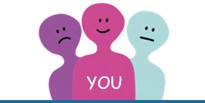
Do your design and delivery create the right environment?
Psychological safety is a hot topic in discussions about organizational culture. Moreover, business leaders seem to understand that safety, empathy, trust, and belonging are critical to the well-being of both employees and organizations.
Recently, I had the opportunity to develop a course on these four components of culture. Our client believed that teaching leaders how to foster empathy, belonging, psychological safety, and trust would improve employee engagement, retention, DEI, and civility issues, helping the organization achieve its goals.
But simply talking about these four components wasn’t enough.
We needed to demonstrate them throughout the entire learning experience. This meant choosing words, imagery, and a course structure that allowed our audience to feel safe and stay engaged while they worked through vulnerable and challenging topics.
How did we do this?
- We chose language that avoided direct reference to gender identification, race or ethnicity, age, or disability status. For example, we would refer to “team members” and “supervisors” without specific demographic references.
- We used stories to make the concepts relatable. Storytelling engages our minds and hearts. It taps into our capacity for empathy. We didn’t just want to teach about these concepts, we wanted the learners to experience them. For example, we used stories and scenarios that featured the “whole person” at work. We also used videos from recognized experts like Simon Sinek, who taught about trust through a story. We relied on powerful Ted Talks to teach about assumptions.

We use “paper people” and stick figure imagery with no race, age, or gender.
- We carefully selected visuals that were inclusive but not specific. What does this mean? For example, we used pictures of hands coming together in a group; the hands represented different skin tones and different genders. We avoided images with faces that might reinforce the assumptions our brains already create. We used “paper people” and stick figure imagery with no race, age, or gender.
- We used visuals that were inclusive and specific. Sometimes we just needed to include faces. So, we made sure the faces in our imagery and case studies were representative of the team members in our client’s organization.
- We called attention to our brains’ tendencies toward assumptions and biases. We made a lesson out of this very real human function, and then taught how awareness can help us set those stories aside to be replaced by openness, curiosity, and empathy.
- We set a group agreement to protect confidentiality. We made it ok to share what participants learned in the workshop but agreed not to share what other participants said.
- We started and ended with “your one word.” This workshop was delivered virtually, so we needed to intentionally build a sense of connection. We started with introductions that included name, team, location, and “your one word.” Each person shared a word to describe how they were feeling coming into the workshop that day. We heard everything from “excited” and “motivated” to “stretched” and vulnerable.”
- We included group and individual activities. Not everything has to be shared to be learned. Particularly for topics like these, the learners needed time to reflect and apply at an individual level. They did this through self-assessments, confidence checks, and application activities focused on specific members of their teams. They also worked in groups on case studies so they could benefit from ideas and takeaways from their peers. Whenever appropriate, we did whole group debriefs so participants could benefit from different thinking and ideas.
Most importantly, we reviewed the concepts, the content, and the visuals with our client advisory team to make sure each aspect would land well. We had to check our own stories and assumptions about what would be effective and open ourselves to the feelings and experiences of the advisors. In other words, we had to practice what we were preaching in our own course.
Do your design and delivery create the right environment? Tell us about it using the form below.



